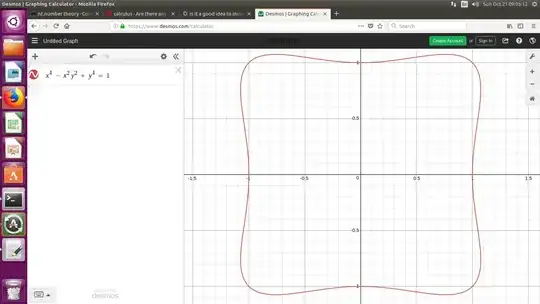Today I was trying to prove that
$$\lim_{(x, y) \to (0, 0)}\dfrac {x^2y^2}{x^2+y^2} = 0 $$
I got really lucky because the AM-GM inequality directly applies here to give us $$\dfrac {x^2y^2}{x^2+y^2} \le \dfrac {x^4 + y^4}{x^2+y^2} \le \dfrac {(x^2+y^2)^2}{x^2+y^2} = x^2+y^2$$
And thus we may choose $\delta = \sqrt \epsilon$.
However, this was really lucky to turn out so cleanly. My question is, when it isn't so clean, are there any general guidelines?
For example:
- Do you look at the $|f(x, y)- L| < \epsilon$ and try to manipulate it? What exactly is the goal when you try to manipulate this?
- Do you look the $\sqrt {(x-a)^2 + (y-b)^2} < \delta$ term and try to manipulate it? What exactly is the goal when you try to manipulate this?
Etc.
Thank you.
